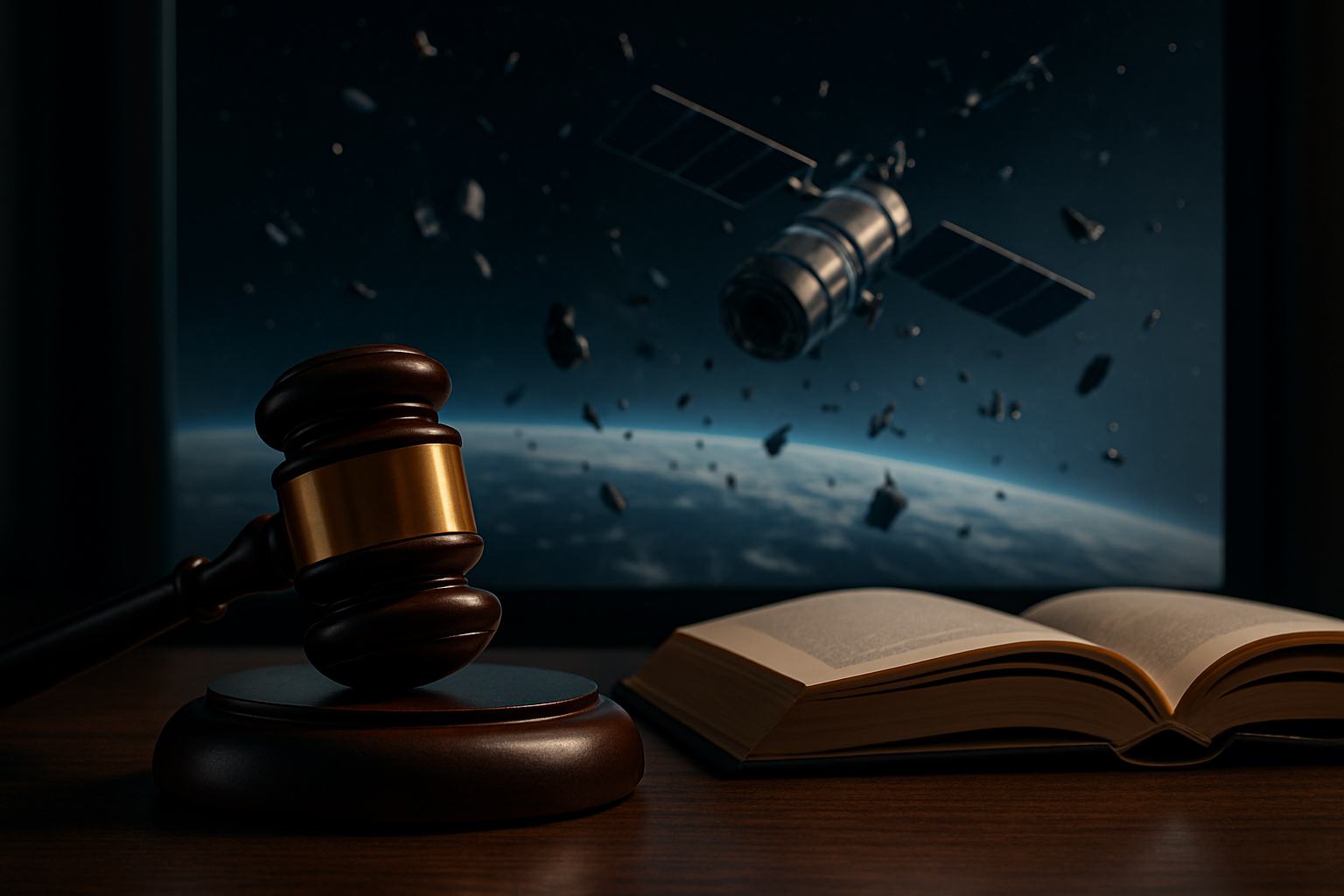Title: Legal Implications of Space Debris: A New Frontier in Law
Introduction: As humanity's reach extends beyond Earth, a new legal frontier emerges: space debris regulation. This complex issue intertwines international law, environmental concerns, and technological advancement, challenging traditional legal frameworks and demanding innovative solutions to ensure the sustainable use of outer space.

Historical Context and Legal Framework
The legal framework governing space activities dates back to the 1967 Outer Space Treaty, which established foundational principles for the peaceful use of outer space. However, this treaty and subsequent agreements did not explicitly address the issue of space debris. As space activities expanded, the need for specific regulations became apparent. In 2007, the United Nations General Assembly endorsed the Space Debris Mitigation Guidelines, marking a significant step towards addressing this growing concern.
Current Legal Challenges
The primary challenge in regulating space debris lies in the unique nature of outer space as a global commons. Unlike terrestrial environments, space lacks clear jurisdictional boundaries, making it difficult to assign responsibility for debris removal or mitigation. Additionally, the dual-use nature of many space technologies complicates efforts to regulate debris-creating activities without impinging on legitimate space operations.
Emerging Legal Approaches
Recent years have seen innovative legal approaches to tackle the space debris problem. The concept of extended producer responsibility, widely used in environmental law, is being adapted to space activities. Under this approach, satellite operators would be responsible for the entire lifecycle of their spacecraft, including its eventual disposal. Some nations have begun incorporating these principles into their national space laws, requiring operators to submit end-of-life plans for satellites before launch approval.
International Cooperation and Soft Law
Given the global nature of the space debris issue, international cooperation is crucial. While binding treaties have proven difficult to negotiate, soft law instruments have gained traction. The Inter-Agency Space Debris Coordination Committee (IADC), comprising major space agencies, has developed technical guidelines for debris mitigation. These guidelines, though non-binding, have influenced national policies and industry practices worldwide.
The Role of Domestic Legislation
In the absence of comprehensive international regulations, domestic legislation has become an important tool in addressing space debris. Countries like the United States, Japan, and France have enacted laws requiring satellite operators to minimize debris creation and implement end-of-life disposal plans. These national laws often serve as models for other countries and contribute to the development of customary international law in this area.
Liability and Insurance Considerations
As the risk of collisions increases, questions of liability for damage caused by space debris have come to the forefront. The 1972 Liability Convention provides a framework for addressing damage caused by space objects, but its application to debris-related incidents remains untested. This legal uncertainty has led to the development of specialized insurance products for space activities, with implications for risk assessment and management in the space industry.
Technological Solutions and Legal Implications
Efforts to develop technologies for active debris removal have raised new legal questions. These include issues of ownership and jurisdiction over debris, liability for removal operations, and potential dual-use concerns. As these technologies advance, legal frameworks must evolve to facilitate their deployment while addressing security and sovereignty concerns of spacefaring nations.
Future Directions in Space Debris Law
The future of space debris law is likely to involve a combination of binding international agreements, national legislation, and industry self-regulation. Proposals for a comprehensive space traffic management system, akin to air traffic control, are gaining traction. Such a system would require significant legal and institutional innovations, potentially reshaping the governance of outer space activities.
In conclusion, the legal landscape surrounding space debris is rapidly evolving, reflecting the urgency of the issue and the complexities of regulating activities in outer space. As space activities continue to expand, the development of robust legal frameworks to address space debris will be crucial for ensuring the sustainable use of this shared domain. The challenge lies in balancing technological innovation, economic interests, and environmental concerns while navigating the unique legal terrain of outer space.





